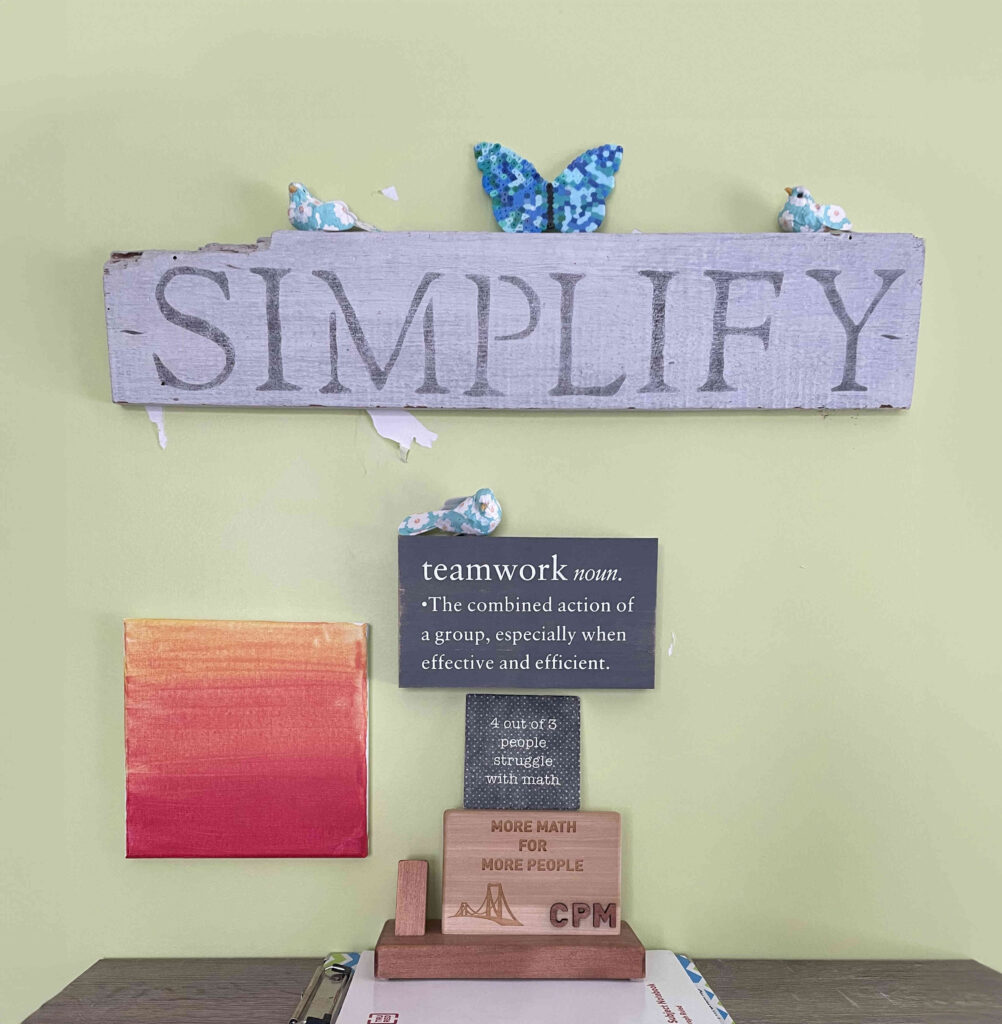February 2024

Grading has to be my least favorite part of teaching. It probably does not take up most of our time, but it sure feels like it. The fact students do not use or seem to value the work we put into this feedback makes it feel like an even greater time suck. Many years ago, a friend made me a barn wood sign that said, “Simplify.” It ended up in my classroom, where I would gesture towards it when asked about fractions. Because the sign has been staring at me for years, I have been seeking ways to simplify grading.
I recently picked up Visible Learning: Feedback (Hattie & Clarke, 2019), and got my money’s worth by the end of page 1. John Hattie and Shirley Clark asked thousands of teachers, “What do you mean by feedback?” They consolidated their answers into what they refer to as the ten Cs:
- comments;
- clarification;
- criticism;
- confirmation;
- content development (adding to or confirming content knowledge);
- constructive reflection;
- correction;
- cons and pros (about the work);
- commentary; and
- criterion (relative to a standard).
By and large, teachers defined feedback as evaluating the work in front of them.
Then, the authors asked thousands of students the same question. Students’ top explanation, far and away, simplifies to: Feedback helps me know where to go next. Hattie and Clarke go on to observe that, “Oftentimes when feedback is more about the above ten Cs [evaluating their work], the students will claim that they did not receive any feedback.”
So, I have simplified my feedback. If students want to know where to go next, that is where my energy should go. I still used the ten C’s to evaluate the work in front of me. However, instead of sharing my evaluation with students, I made sure to tell them, one way or another, what could be next. That shift quickly helped me better understand how students were developing concepts and skills.
- Were they stuck with an introductory idea we had done in an earlier chapter?
- Were they dabbling with ideas they would explore at the end of the year, or in the next grade?
- What was next?
My grade level team used a 4-point rubric across subject areas. A student with an initial understanding might score 2 on their work. A student working toward end-of-year ideas should be approaching a score of 4. Rather than being consumed with deducting points and calculating the percentage, I used the rubric to describe to students how they were progressing. Students used the rubric to analyze their own work. My verbal and written feedback was about what they knew and what to do next.
Simplifying my feedback by providing students with clear next steps had amazing side effects. I had to consider the learning progression within the mixed, spaced practice of CPM textbooks, which helped me understand student thinking and how they might approach the problems. I started to see them as people on a journey, rather than racking up points to be dinged by deductions. It prepared me to try standards-based grading and integrate more self-assessment for students. It expanded my idea of what could count as evidence of student learning. Classroom interactions with students could be sources of data about their understanding. Reviewing students’ reflections on their work was more important than marking their mistakes. I was relieved of the burden of churning through piles of papers every night, just to generate a percentage. Most importantly, my students got the feedback they needed.
I would like to challenge you to simplify.
- How can your comments help students know where to go next?
- What tools or systems do you have (as I had a team rubric) to help you better communicate where to go next?
- What is already happening in your class time that could help you provide better feedback?
And if you need a sign, I have a friend who might be able to help you out.
Jocelyn Dunnack
jocelyndunnack@cpm.org